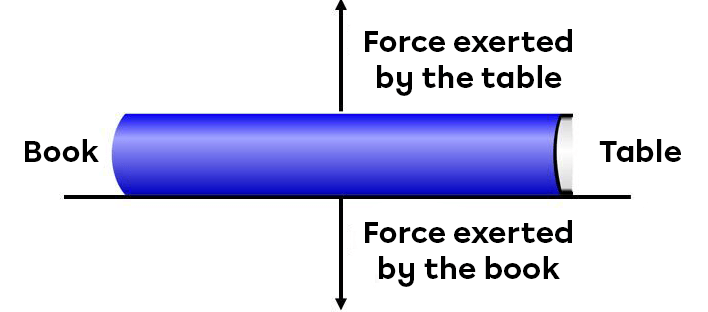Newton's third law of motion explains the action-reaction principle: when body A exerts a force on body B, body B will exert a force of the same magnitude, although in the opposite sense, on body A.
When a person pushes on a wall, he exerts a force on the wall. At the same time, however, the wall exerts a force of equivalent magnitude, but in the opposite sense to the force exerted by the person. Since this force is not necessarily easy to visualize, imagine the same person exerting this force on the wall while standing on a skateboard. If he pushes on the wall, he will move away from it, because the wall has exerted a force on him.
The principle is similar for a person who is walking. The person exerts a force on the ground. In reaction to this force, the ground exerts a force on the person. But it's not the force of a human being that makes him move: if it had its feet in a vacuum and applied the same force, it wouldn't be able to move. So it's the ground that enables a person to walk, thanks to the force of reaction.
The law of action-reaction also applies to swimmers. If a swimmer wants to move in a given direction and sense, he must exert a thrust with his arms and legs in the opposite sense. In this case, his arms or legs will exert a force in one sense, while the water will exert a force in the opposite sense.
When a book is placed on a table, the book exerts a downward force. The table exerts in return an upward force of the same magnitude.
Two immobile skaters face each other on the ice. The left skater (Skater A) pushes the right skater (Skater B) to the right. Which skater will move?
Both skaters will start moving. Indeed, when skater A pushes skater B to the right, the latter will move to the right. Moreover, according to the law of action-reaction, when skater A pushes on skater B, she will receive a push of the same magnitude, but in the opposite sense (to the left). Skater A will therefore also be propelled but to the left.

